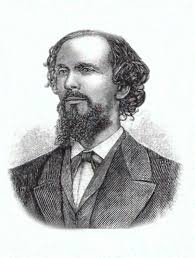Fighting is unarguably a central aspect of the game of hockey. It has been an integral part of the game essentially since its invention. One reason for the popularity of fighting in hockey can be explained by one of the features of Christopher Kimmel’s man-box: aggressiveness (Kimmel 6). Kimmel argues that masculinity is “characterized by a willingness to take physical risks and become violent if necessary”. In the CBC’s documentary, “The Code” (2010), several former National Hockey League Players including Nick Kypreos and Georges Laraque, explain the code among players with respect to the merits of fighting, known simply as “The Code”. The Code explains that on a given National Hockey League team, there are star players, the celebrities of the team, and there are enforcers. The enforcers, players who are stronger and tougher than their colleagues, have a role to protect their teammates. This means that if the enforcers feel that one of their teammates, especially one of the stars, has been treated disrespectfully, it is their role to instigate a fight with the player who disrespected their teammate. This behaviour is exactly in line with the above man-box characteristic of aggressiveness in that the enforcers feel that if their teammates are disrespected, violence is necessary.
One ritual of hockey fights is the removal of the helmet prior to fighting. This is supposedly done to minimize the risk of hand injury, but it simultaneously increases the risk of head injury. One such example of head injury is Chronic Traumatic Encephalopathy or CTE. CTE is linked with repeated traumatic brain injury (such as concussions), and symptoms include “cognitive decline, emotional or behavioural changes, and motor impairment” (Ventresca 73-98). Wade Belak played with the National Hockey League as an enforcer for many years, fighting many fights. At one point, his behaviour started to change and he became depressed. He ended up committing suicide in August of 2011. The most important piece of information from this not uncommon tragic story is that the player’s depression was a result of Chronic Traumatic Encephalopathy. People die as a result of hockey fights. Is the respect of an opponent really worth a life?
- The Code – Episodes – The Fifth Estate. CBCnews, CBC/Radio Canada, http://www.cbc.ca/fifth/episodes/2009-2010/the-code.
- Ventresca, M. (2019). The Tangled Multiplicities of CTE: Scientific Uncertainty and the Infrastructures of Traumatic Brain Injury. Sports, Society, And Technology, 73-98. doi: 10.1007/978-981-32-9127-0_4
- Hockey fight: Wives reveal the cost of concussions – Episodes – The Fifth Estate. (2020). Retrieved 4 May 2020, from https://www.cbc.ca/fifth/episodes/2019-2020/hockey-fight-wives-reveal-the-cost-of-concussions

